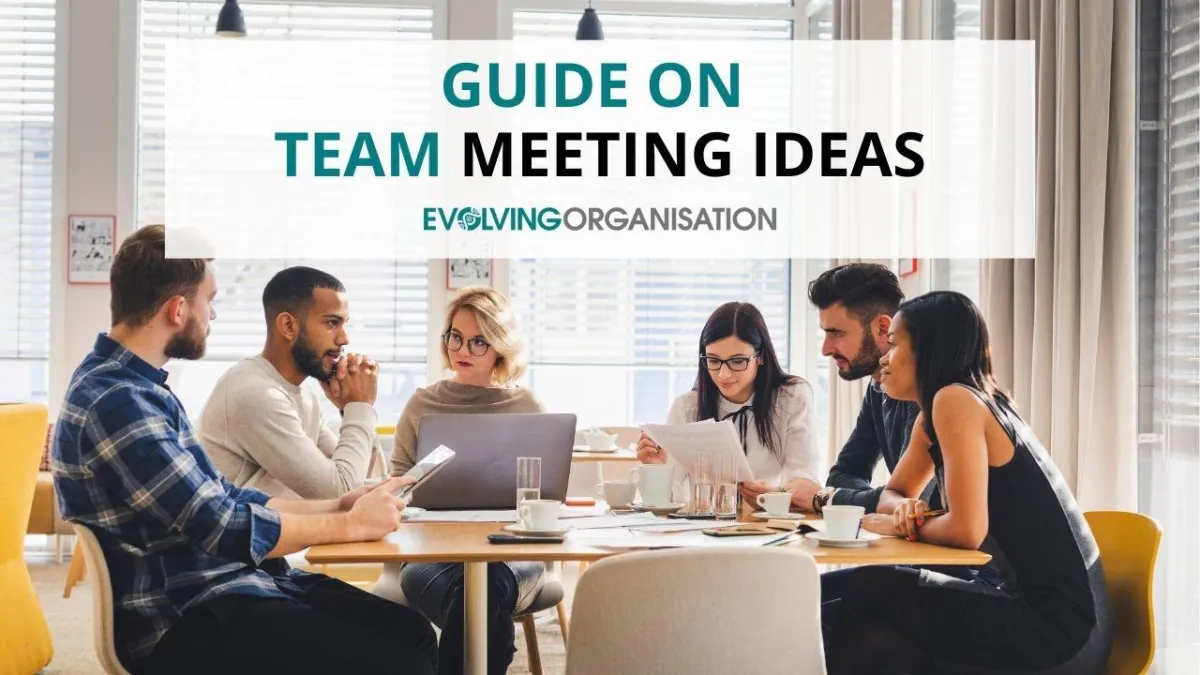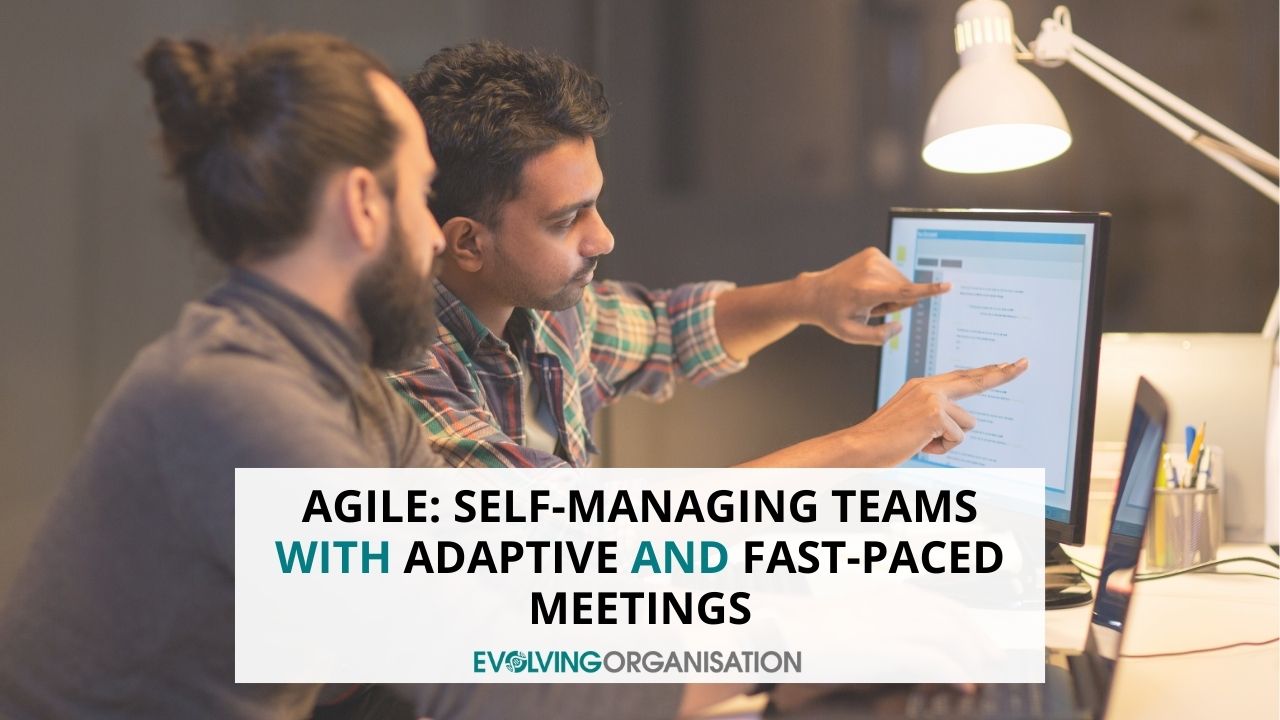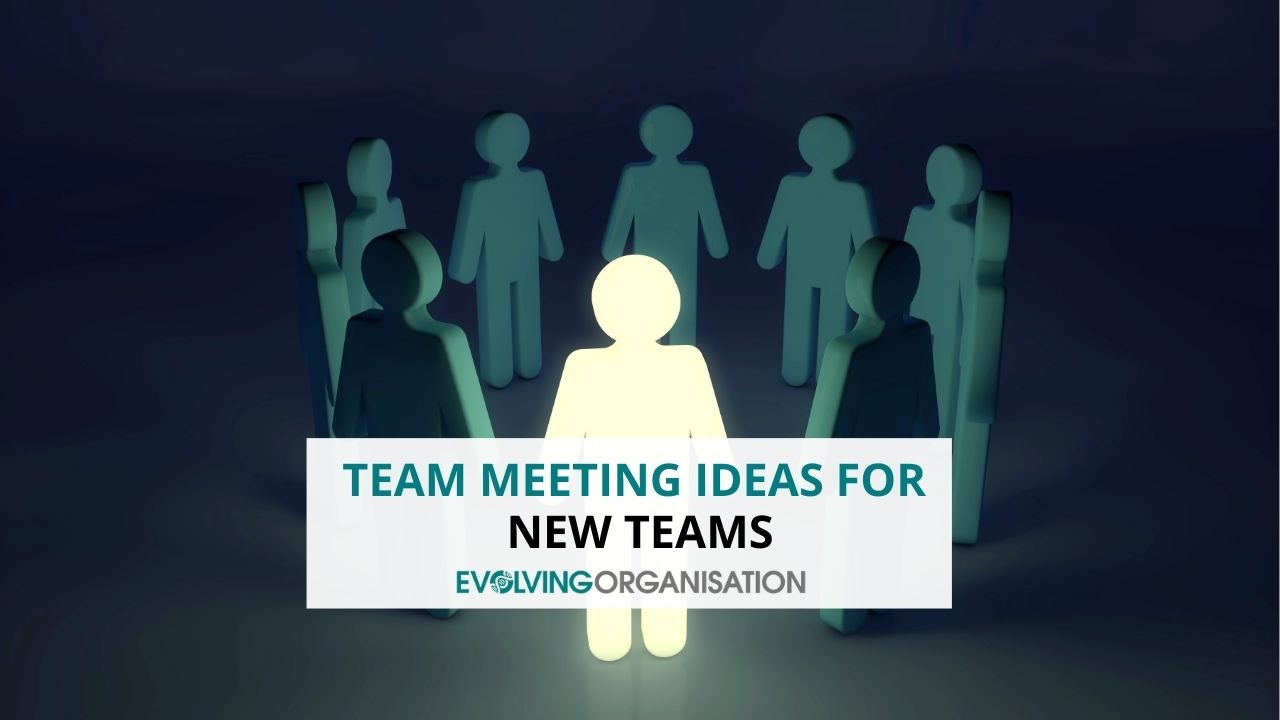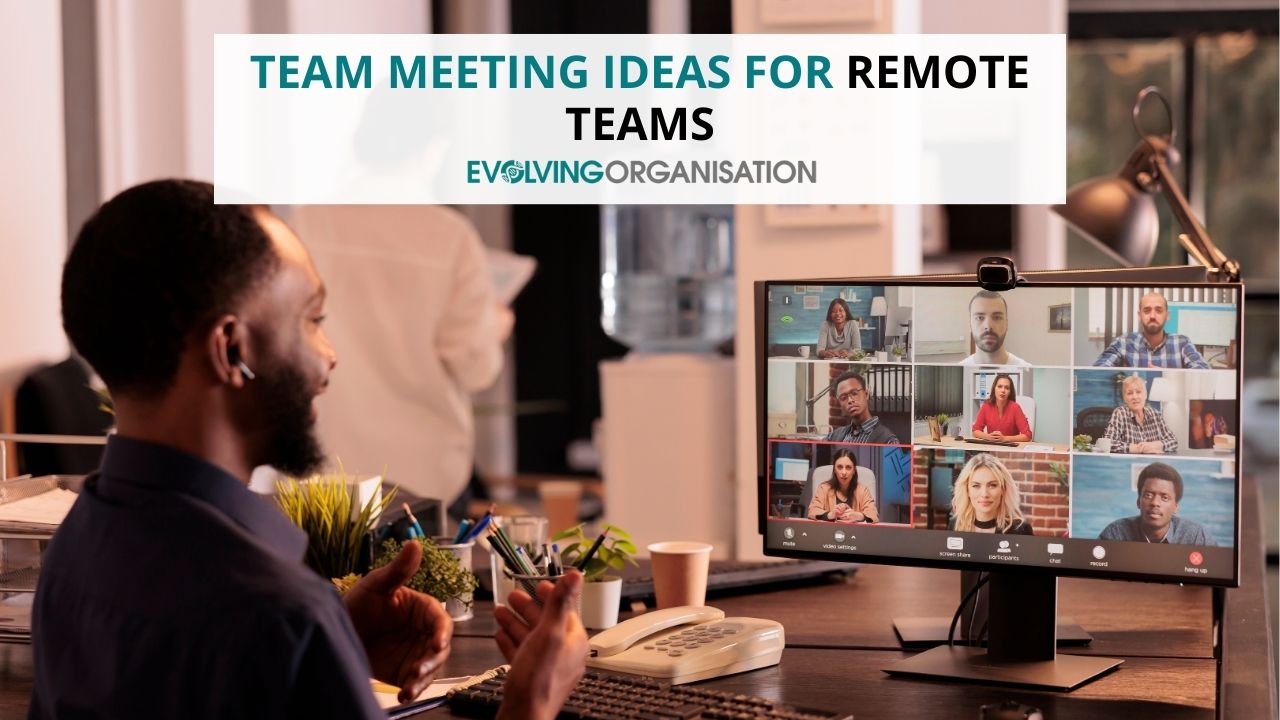
All You Need To Know About Team Meeting Ideas
Understanding whether a team is using hierarchy, a more collaborative approach or a more agile way of working is essential to making team meetings effective.
The Self-Organising Beyond Hierarchy series highlights three distinct patterns—hierarchy, collaborative, and agile—that shape how work is coordinated decisions are made. Power is exercised in teams and organisations. When you understand which of these patterns is at play in your team, each pattern offers opportunities for meetings to be effective.
Meetings in a Hierarchy: Traditional Control and Structured Meetings
In a hierarchical team or organisation, meetings are typically controlled by managers who decide the agenda, direct discussions, and make final decisions.
These meetings often follow a familiar, top-down format, with managers micromanaging or delegating tasks based on authority. The culture here usually involves control, with managers seeking to ensure work is done according to their standards.
Achieving effective meetings in the hierarchy:
Clarity of decision rights:
Clearly define what decisions are made by managers versus those delegated to team members to specify who owns what.
Structured agenda with decision points:
Follow a disciplined agenda focusing on updates, approvals, and problem-solving within the manager’s scope.
Control through process:
Use decision protocols that allow managers to make quick, informed decisions without micromanaging, such as consent or delegated authority.
Example:
A project manager running weekly status meetings where team members report on their tasks, and the manager makes the final call on resource allocation or deadlines.
Collaborative: Shared Power and Participative Meetings

In a collaborative team or organisation, power is shared more evenly. Meetings are more participative, with team members contributing ideas and sharing responsibility for decisions. The culture encourages dialogue, transparency, and mutual respect.
Achieving effective meetings in collaborative teams and organisations:
Inclusive decision-making:
Use group decision-making methods suited for collaborative settings, such as voting, consent-based or consensus, to make decisions that hear and integrate multiple perspectives.
Clearly define your group decision-making process:
Some teams or groups always use the same method for all decisions, e.g. having a discussion then taking a vote. Other teams take a more sophisticated approach and use voting for some types of quicker decisions, and consent-based decision-making for bigger and more serious decisions like strategy.
Use a Skilled Facilitator who is not the Team Leader:
this helps to separate the general leadership of the team from the facilitation of the meeting process. If you don’t have a person in your team who is already skilled in meeting Facilitation then get someone trained up!
Example:
A product development team holds weekly collaborative meetings where each member reports on their work, shares any issues, and collectively decides on next steps for the team members, fostering ownership and shared responsibility.
In this pattern, meetings become a space for building trust, aligning purpose, and making decisions collectively more efficiently, thanks to clear shared decision protocols for inclusive decision-making processes.
Agile: Self-Managing Teams with Adaptive and Fast-Paced Meetings

Agile teams and organisations operate with high autonomy and rapid decision cycles. Meetings are designed to be short, focused, and highly adaptive, supporting continuous learning and quick responses to change.
Achieving effective meetings in an Agile context:
Role-defined teams with distributed authority:
Each team member has a clear role with Purpose, Domains, and Accountabilities, enabling autonomous decision-making.
Frequent sensing and ownership:
Members sense tensions or opportunities, track them in their trusted systems, and own the resolution without waiting for hierarchical approval.
Timeboxed, purpose-driven meetings:
Use short stand-ups, retrospectives, and planning sessions that follow strict timeboxes and clear agendas aligned with current priorities. Use a Skilled Facilitator who is not the Team Leader, as above.
Example:
A software development team holds daily stand-ups where each member reports on their current tensions and progress, with each member owning their tensions, taking responsibility and initiative for resolving them, enabling rapid iteration adaptation.
In agile organisations, meetings are a catalyst for continuous improvement, with decision-making decentralised and tensions surfaced and processed quickly. This creates a resilient, fast-moving team capable of thriving in complex environments.
Team Meeting Ideas for New or New(ish) Teams

Early Role Clarification
Establish clear role definitions from the start so team members understand their decision rights and responsibilities. Consider giving roles their Purpose, Domains, and Accountabilities.
Shared Purpose Negotiation
Facilitate conversations to arrive at a shared purpose, even if not everyone agrees on every detail. This builds a foundation of collective commitment.
Surface Tensions and Ownership
Encourage team members to sense and track issues/topics/challenges/things they are stuck within their work/roles. These could be called ‘tensions’, and encourage them to take ownership of resolving them. For example, a new team might hold weekly check-ins focused on surfacing obstacles and aligning on solutions.
Regular Alignment Meetings
Use short, focused meetings to reinforce clarity, surface tensions, and foster ownership, helping the team develop trust and coherence quickly.
Team Meeting Ideas for Motivation
Empower Decision-Making at the Role Level
When roles are clear, team members can sense, track, own, and resolve tensions independently, increasing motivation and initiative.
For instance, a team member noticing a process inefficiency can decide to improve it without waiting for approval if it’s clear that it serves their role’s Purpose and doesn’t cross any boundary of any other role.
Recognise and Celebrate Ownership
Highlight when team members successfully resolve tensions or improve processes, reinforcing their agency and motivation.
Align Work with Purpose
Regularly revisit individual and shared purpose, encouraging team members to see how their work contributes meaningfully, which boosts intrinsic motivation.
Team Meeting Ideas for Communication

Project-Based Updates
Ensure each team member shares updates for each project they are leading, making communication relevant and efficient.
Surfacing Tensions
Use the sensing, tracking, owning, and processing framework to surface issues during meetings, making communication transparent and action-oriented.
Shared Visual Systems
Maintain shared dashboards or boards to track work, tensions, and decisions, keeping everyone aligned and informed between meetings.
Team Meeting Ideas to Boost Productivity
Distribute Decision-Making Authority
Empower team members to make decisions within their roles, reducing delays. For example, a team member owning a client onboarding process can decide on timelines and actions without seeking approval from a manager or the rest of the team.
Visual Management Tools
Use visual boards to track work in progress and tensions, enabling quick identification of bottlenecks and fostering autonomous resolution.
Timeboxed, Focused Meetings
Keep meetings short and purpose-driven, such as daily stand-ups or weekly check-ins, to maintain momentum and reduce fatigue.
Ownership of Tensions Between Meetings
Encourage team members to sense, track, and resolve tensions independently and outside of meetings so meetings focus on alignment and only those things that can’t be solved outside of meetings.
Team Meeting Ideas for Remote Teams

Personal Check-Ins and Check-Outs
Encourage personal ‘check-ins’ at the start of meetings and ‘check-outs’ at the end of meetings to help foster personal connections between people and a general team spirit.
Shared Digital Systems
Use collaborative tools like digital boards or dashboards for tracking work, tensions, and decisions. Keep these updated to facilitate transparency.
Short, Focused Virtual Meetings
Follow —clear agendas, timeboxes, and decision protocols—adapted for remote settings.
Asynchronous Sensing and Tracking
Encourage team members to sense and track tensions in their own time, updating shared systems before meetings to ensure discussions are focused and productive.

Better Meetings, Better Team
Whether operating within a hierarchy, a collaborative environment, or an agile, Self-Managing team, using the meeting practices that fit best with the actual pattern that your team is in at any moment means that your meetings are more likely to be more effective.
Suppose you want to learn these practices in depth. In that case, programs like Team Clarity & Faster Decision-Making and The Meetings Revolution offer step-by-step guidance and practical tools to help your team make these shifts confidently and effectively.
When you move beyond hierarchy and empower your team to own their roles, communicate openly, and adapt quickly, you don’t just improve performance—you create the foundation for lasting success in a fast-changing world.
This blog serves as a continuation of our commitment to improving performance and decision-making within organisations. Stay tuned for our next instalment, where we will delve deeper into a range of practical tools that do this.
For more insights and resources, visit our website. Together, let’s evolve and adapt to the challenges of our dynamic world and build a better, more collaborative future—together.


